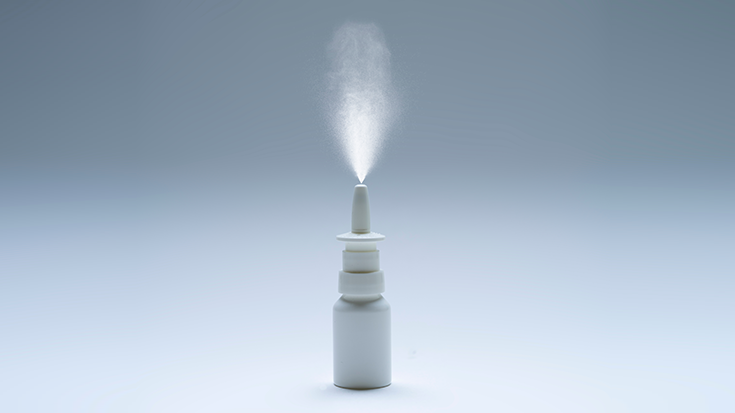
Awake Prone Positioning Doesn’t Hold Up in Multicenter Study
Prone positioning in awake patients was a practice adopted by many hospitals during the pandemic, with the theory being that placing patients on their stomachs would improve overall oxygenation in the lungs.
Researchers from UTHealth Houston and elsewhere who looked at awake prone positioning in COVID-19 patients in hospitals in the U.S., Canada, Kuwait, and Saudi Arabia disputed the procedure’s value in a study published by JAMA.
The research included 400 adults who required at least 40% oxygen or noninvasive positive pressure ventilation but had not received invasive mechanical ventilation. Among that group, 205 were randomized to prone position 8-10 hours per day, while the other 195 were randomized to no prone positioning.
Between the two groups, researchers did not see significant differences in terms of either the risk for endotracheal intubation or mortality. At 30 days, the risk of intubation was 34% in the prone position patients vs. 40% in the no prone positioning group. At 60 days, the mortality risk was 22.4% and 23.6%, respectively.
“Throughout my observation of the patients recruited for the study, it was becoming more obvious to me that the strategy helped only some patients, and it had a limited role in preventing patients from requiring mechanical ventilation,” said study author Sujith Cherian, MD. “It will probably come as a surprise to several physicians because of just how widespread this measure was adopted in several countries all over the world.” Read More
More Evidence Pulse Oximeters are Affected by Skin Color
Reports continue to mount suggesting pulse oximeters can be affected by skin color. Researchers who analyzed data on more than 30,000 veterans from more than 100 U.S. Veterans Health System hospitals added to the evidence in a study published by BMJ.
The 2013-2019 data included patients on the general medical and surgical wards who had a pulse oximeter reading and obtained an arterial blood gas test within ten minutes of each other. The investigators found that the probability of occult hypoxemia–defined as occurring when the pulse oximeter reading was fine, but the blood gas reading showed dangerously low blood oxygen–was 15.6% for whites, 19.6% for blacks, and 16.2% for Hispanics.
They also found that readings taken earlier and later in the day were more consistent among white participants than black participants.
“For white patients, if the pulse ox agreed with the earlier blood draw, then you could reasonably trust the pulse ox later,” said study author Thomas S. Valley, MD, from the University of Michigan. “However, our results suggest you can’t place the same trust in pulse ox values over time for black patients. Even if the pulse ox agreed with the earlier blood draw, later pulse ox measurements might miss low blood oxygen levels in black patients.”
Given the growing evidence indicating pulse oximeters are affected by skin color, the FDA announced plans in June to hold a public meeting of the Medical Devices Advisory Committee to discuss the situation. Read More
Asthma Readmissions on the Rise for Children
Australian investigators who followed 767 children aged three to 18 years admitted to hospitals with a diagnosis of asthma in 2017-2018 found one in three were readmitted. That’s up from only one in five a decade earlier.
Overall, 34.3% of the children were readmitted during the year-long study, but among those aged three to five, 69.2% had to go back to the hospital. Nearly 14% of the children required two or more readmissions.
The authors believe these findings point out important gaps in asthma care. For example, in their study, more than a third of the children had not received a review of their inhaler technique, and only around a fourth received a prescription for a preventer inhaler or were asked to continue using the preventer inhaler they already had.
The investigators suggest interactive digital symptom monitoring and home-based education could help prevent these readmissions.
The study was published by the Journal of Asthma. Read More
Telehealth Visits Don’t Add to Overall Health Care Use
Fears that loosening the restrictions on telehealth visits, which occurred during the pandemic, could increase the overall number of visits people make to their health care providers haven’t come to pass, report researchers from the University of Michigan.
Their study examined health data for the second half of 2021, finding that about 9% of all outpatient appointments by patients with Medicare coverage took place via telehealth connections, a huge increase over the percentage seen prior to the pandemic. Overall, one in three Medicare patients had at least one telehealth visit in 2021.
During this same same time, however, the number of in-person visits declined significantly from 2019 levels, leading the authors to conclude that telehealth has not caused the runaway increase in total health visits that some had predicted.
“As telehealth use hits its stride in the Medicare fee-for-service population, the fears that flexible telehealth rules might lead to an increase in the total volume of outpatient visits has not panned out,” said study author Chad Ellimoottil, MD, MS. “With all the evidence we have to date, it appears that telehealth has been used as a substitute for in-person care rather than an expansion of care.” Read More
Two Things That May Reduce Risk for Alzheimer’s Disease
Could a flu shot and PAP therapy for OSA help reduce a person’s risk of developing Alzheimer’s disease? According to two new studies, the answer may be yes.
In the first study, researchers from UTHealth Houston found that people age 65 and older who received at least one influenza vaccine were 40% less likely to develop Alzheimer’s over a four-year period. The trial involved 935,887 people who had been vaccinated against the flu and 935,887 who had not.
Over the four-year study, about 5.1% of those in the flu vaccine group developed Alzheimer’s disease vs. 8.5% of those in the group that did not receive the vaccination.
The second study was conducted by investigators from Mount Sinai, Johns Hopkins University, and New York University and evaluated plasma Alzheimer’s disease biomarkers in 30 people who normally used PAP therapy at home. Blood was collected the evening before and the morning after a night of recorded sleep with CPAP. It was collected again on the third night after the participants had gone without their CPAP.
Significant differences in the overnight change in two Alzheimer’s biomarkers were seen when patients went from PAP therapy to withdrawal of the treatment.
The flu vaccination study was published by the Journal of Alzheimer’s Disease. The PAP therapy study appeared in the American Journal of Respiratory and Critical Care Medicine. Read More And More
iNO Found Effective for Pregnant Women Hospitalized with COVID-19
A recent study from Massachusetts investigators suggests that inhaled nitric oxide (iNO) can improve outcomes for women hospitalized with COVID-19 pneumonia during pregnancy.
The study grew from the initial treatment of six pregnant women with iNO at high doses of up to 200 parts per million (ppm) at Massachusetts General Hospital (MGH) during the first wave of COVID-19. After seeing positive results, clinicians at the hospital began offering it to other pregnant women and made the decision to design a study to examine the safety and efficacy of the treatment during pregnancy.
Tufts Medical Center, Beth Israel Deaconess Medical Center, and Boston Medical Center joined MGH in the trial, and researchers and clinicians from critical care medicine, respiratory care, and maternal-fetal medicine took part in the study, which involved 71 pregnant patients with severe COVID-19 pneumonia. Twenty of them received iNO200 twice daily.
Results showed that when compared to standard of care alone, these women had a reduced need for supplemental oxygen and shorter hospital and ICU lengths of stay. The investigators saw no adverse events related to the intervention in either the mothers or their babies.
“To date, very few respiratory treatments to complement supplemental oxygenation in COVID-19 pregnant patients have been tested,” said senior author Lorenzo Berra, MD, from MGH. “Investigators from all four medical centers that participated in our study agreed that administration of high dose nitric oxide through a snug-fitting mask has enormous potential as a new therapeutic strategy for pregnant patients with COVID-19.”
The study was published by Obstetrics & Gynecology. Read More
Email newsroom@aarc.org with questions or comments, we’d love to hear from you.















